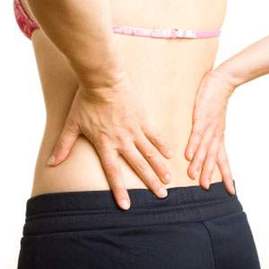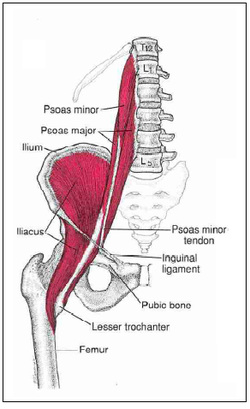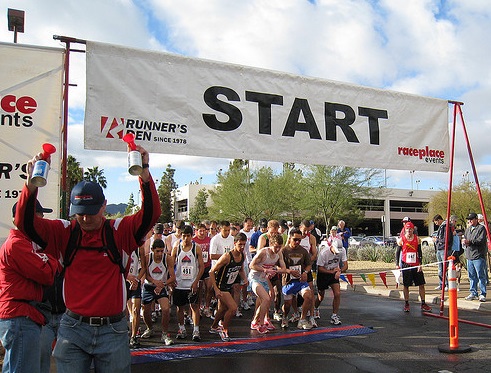|
For someone in their senior years, a gym workout will look a lot different than a workout for someone decades younger by including much more than just lifting weights. In addition to general strength and endurance, including functional exercises can help improve daily life.
Basic movements and functional exercises for everyday life Restoring and improving basic movements are important for an optimal quality of life as you age. Based on personal activity levels, this could mean a simple task such as being able to climb stairs. For those with an active lifestyle, being able to perform hobbies like a strenuous hike or bike ride is crucial to maintaining a high quality of life. Being able to step, squat, bend (hinging effectively), pull, push, and balance will make everyday tasks easier and reduce fatigue at the end of the day. These exercises will also improve performance for athletic hobbies.
0 Comments
I absolutely love running, but I didn’t always feel this way. It took years of on and off running to adapt to it and become proficient enough to enjoy it. One thing that helped me and many other runners improve their performance was to have a consistent weight and resistance training program. More importantly, this will help prevent injuries that are certain to occur to runners without a proper weight training plan.
Exercise is a must for getting rid of low back pain. We use what we call “corrective exercises” that are specifically aimed at improving low back function. These exercises range in difficulty from those done in physical therapy to a beginner muscle building program. We take pride in frequently helping people bridge the gap between physical therapy and their fitness workouts. Exercises can help alleviate low back pain by:
There is an ongoing debate of whether running is beneficial to your health or whether it will make you injured and overtrained. Those against running are usually the people who are not good at it or those where cardiovascular endurance is of lower priority to their other athletic goals. They do however, have some good points as to the negative effects of running. Some people keep running even though they don’t like it. I’ve had many clients who hated running but still continued to do so because it helped them lose weight or just feel better afterwards. They still continue to run even though they don’t like it. Some say it is a recipe for injury and that it won’t really make you lose any fat. Others say it is an easy to do, convenient exercise that will shed the pounds faster than any other activity. So which is it?
Improving Posture with Exercise Takes a Targeted Approach Having great posture requires optimal strength in relative muscles. More specifically, this means that a muscle must have an optimal strength compared to its opposing muscle (antagonist). You can be very strong, but it doesn’t always equate to good posture, nor does being extremely flexible. Good posture requires a balance of strength and flexibility in muscles in relation to each other.
So let’s take a quick look at good posture and compare it to some of the most commonly seen postures that can cause pain or injury.  It is estimated that 80% of all adults experience low-back pain.(1) For many people poor posture is to blame which can be alleviated with a proper exercise and stretching routine. Even those with intervertebral disk injuries or other diagnosed back conditions will benefit from properly chosen exercises when done correctly. You may have heard that the gluteus maximus is the largest muscle in the body, but you may not know that it is also one of the most underused muscles. Having strong, well-functioning gluteal muscles (commonly mentioned as “glutes”) is crucial for good posture and those with low back pain. In fact many PROPER injury rehabilitation programs include strengthening the gluteus maximus as well as the other gluteal muscles. Have a bad ankle? Strengthen the glutes. Bad knees? Strengthen the glutes. Bad back? Definitely strengthen the glutes. Many people have underactive gluteus maximus muscles due to our constant sitting lifestyle. When seated they are placed in a lengthened position. Being that most Americans spend the majority of the day sitting, our glutes are constantly in this lengthened position. This can lead to the glutes being underactive when performing daily activities like walking, squatting, or kneeling to the ground. As a consequence, other muscles will compensate for “lazy” glutes. This along with other compensations can ultimately lead to low back pain. Gluteus Maximus activation exercise: Floor Bridge Tight Hip Flexors and Quads Can Coincide with Anterior Pelvic Tilt _ Most people have tight quads and many have tight hip flexors. If one or both of these muscles are shortened, anterior pelvic tilt will commonly occur. It is important to have proper length tension relationships between opposing muscle groups to attain adequate posture and function. In anterior pelvic tilt, the legs will have tight quads and/or hip flexors and lengthened/weak hamstrings and glutes. In the trunk, lower back muscles (erector spinae) will be tight and abdominals (rectus abdominus) will be weak. This affects a wide range of the population due to the amount of time we spend sitting. Though there are many causes of lower back issues, excessive anterior pelvic tilt will often result in lower back problems. Normal pelvic tilt for men is 3-5° and for women 5-7°. This angle is measured with one point being the posterior superior iliac spine (PSIS) and the other being the anterior superior iliac spine (ASIS). For an accurate assessment of pelvic tilt, please consult with a qualified health or fitness professional. Safe and Effective Stretches In a previous article I talked about how important it is to stretch the psoas muscle. This can cause many complications including back pain. To recap, most people have tight and shortened psoas muscles. The common activity of sitting causes our psoas to be consistantly shortened for extended periods of time. Also, lower back injuries almost always contribute to a tight psoas. In this circumstance, the psoas will undergo a consistent flexed state to protect an injured lower back. (1)
In addition to the psoas being tight, it is also typically weak at the same time. This creates dysfunction in the muscle. Our brain has trouble controlling the muscle because it has been in a shortened position for so long, thinking the psoas always needs to be flexed. We can stretch endlessly, but if we do not build functionality, then it will easily tighten up again. Psoas Strength Test (Modified Sahrmann’s Test (3)) Here is a general way to determine if your psoas is weak:
Many people can have tight and dysfunctional iliopsoas muscles. This happens from bad posture or ergonomics in our daily life. I use to term “notoriously tight” because a tight, weak, and/or dysfunctional iliopsoas is coupled with back pain. An article in Dynamic Chiropractic states, "Any and all defects of the spine and the hip joint structures should be evaluated in terms of disturbance of function of the iliopsoas." (1)  From Ilio -Psoas-07-2003 (3) From Ilio -Psoas-07-2003 (3) Iliopsoas Anatomy and Function The iliopsoas is a group of muscles mainly used for hip flexion. The Psoas, two muscles within this group, originates in front of (anterior to) the transverse processes of the T12 to L5 vertebrae and inserts into the lesser trochanter of the femur. (2) Simply put, it starts on the lumbar spine (as well as the last thoracic vertebrae) and connects into your upper thigh. Its predominant function is for hip flexion (bringing your knee to your chest) but, also aids in bending and twisting the trunk, as well as stabilizing the spine. The Iliopsoas and it's Effect on the Body The iliopsoas and specifically the psoas, plays a major part in core musculature. Early in my career instructors emphasized the importance of looking for tight iliopsoas and stretching it. This was pretty easy to spot and to test for, but it wasn’t until a couple years later I found out first hand the problems this can cause. Back pain, sacroilliac dysfunction, degenerative disc disease, groin pain, scoliosis, and more are the result or cause of tight/dysfuncitional iliopsoas muscles. (1)(2)(3). A dysfunctional iliopsoas can even cause pelvic discomfort, bowel dysfunction, burning in the thigh, groin, labia/testicle, and almost always mal posture.(3) I personally experienced some of these common symptoms like back pain sacroiliac pain, and mal posture. I even experienced intense less common symptoms that many doctors could not explain. Read more on Jerry’s experience with psoas dysfunction. The solution to some of these problems may be complex and need much further care, but you can stretch the iliopsoas and specifically the psoas to help you with rehabilitation, post-rehabilitation and injury prevention. It is an easy and simple stretch, but there are some key points to focus on. |
AuthorJerry Yuhara, CPT, CSCS, CMT #75123 Categories
All
JY Fitness
299 California Ave, Suite 120 Palo Alto, CA 94306 650-485-1240 contact@jyfit.com Contact Copyright JY Fitness 2024, All Rights Reserved. Find us on Nextdoor.com
|


